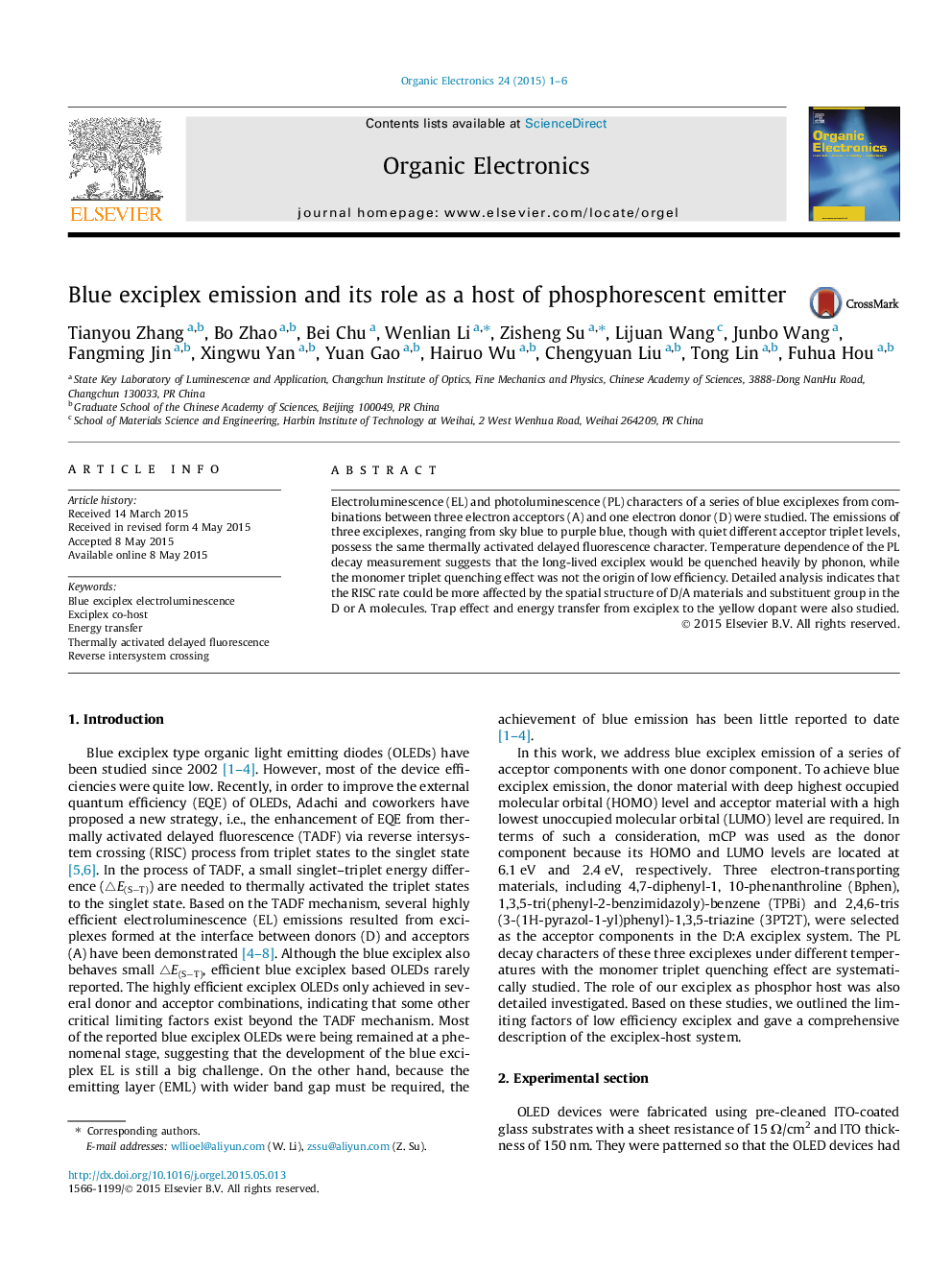| Article ID | Journal | Published Year | Pages | File Type |
|---|---|---|---|---|
| 1263668 | Organic Electronics | 2015 | 6 Pages |
•Temperature dependence of PL decay of three blue exciplexes was studied.•Limiting factors of the efficiency of exciplex were explored.•The energy transfer process from the triplet exciplex to the phosphorescent emitter were explored.
Electroluminescence (EL) and photoluminescence (PL) characters of a series of blue exciplexes from combinations between three electron acceptors (A) and one electron donor (D) were studied. The emissions of three exciplexes, ranging from sky blue to purple blue, though with quiet different acceptor triplet levels, possess the same thermally activated delayed fluorescence character. Temperature dependence of the PL decay measurement suggests that the long-lived exciplex would be quenched heavily by phonon, while the monomer triplet quenching effect was not the origin of low efficiency. Detailed analysis indicates that the RISC rate could be more affected by the spatial structure of D/A materials and substituent group in the D or A molecules. Trap effect and energy transfer from exciplex to the yellow dopant were also studied.
Graphical abstractFigure optionsDownload full-size imageDownload as PowerPoint slide
